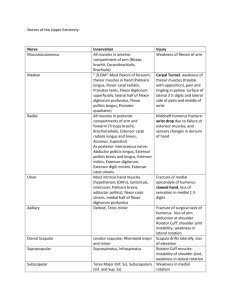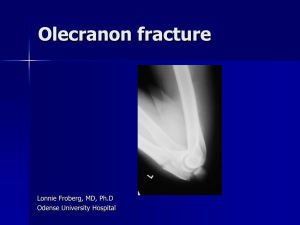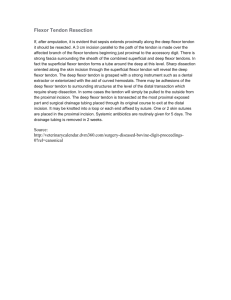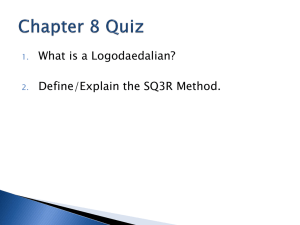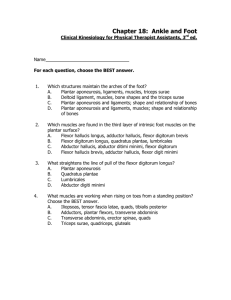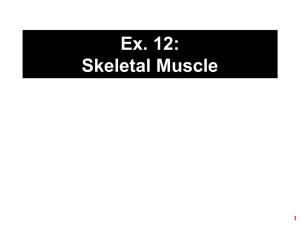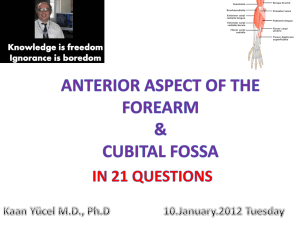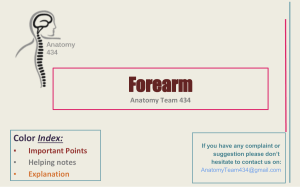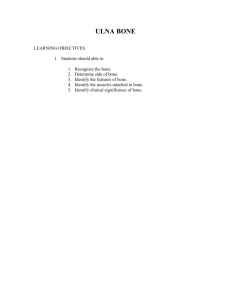Hammertoes Abnormal contracture of the joints of the
advertisement
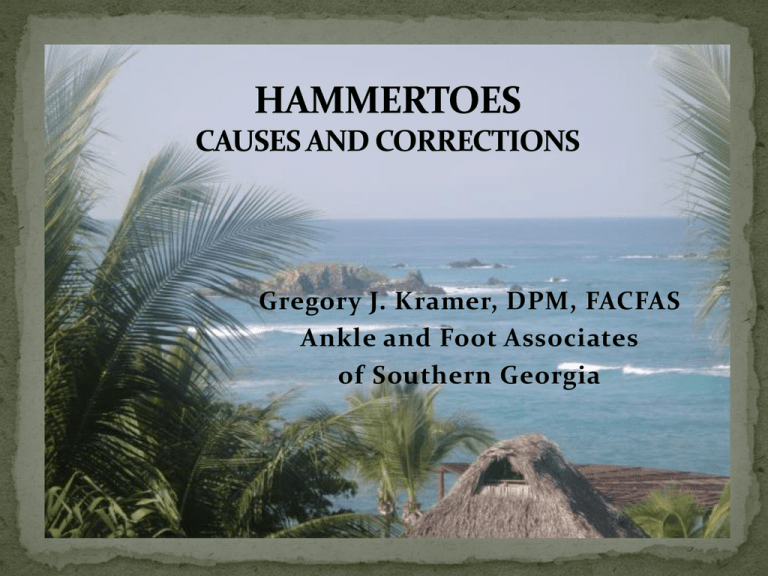
Gregory J. Kramer, DPM, FACFAS Ankle and Foot Associates of Southern Georgia Anatomy Classification Etiology Treatment Surgical Arthroplasty vs. Arthrodesis OrthoPro Screw 2 Osseous Structures Soft Tissue Structures 3 Metatarsal Head Shaft Base Phalanges Proximal Middle Distal Head Shaft Base Articulations Metatarsal Phalangeal Joint (MPJ) Proximal Interphalangeal Joint (PIPJ) Distal Interphalangeal Joint (DIPJ) 4 Tendons Extrinsic Extensor digitorum longus Flexor digitorum longus Intrinsic Extensor digitorum brevis Flexor digitorum brevis Dorsal and Plantar Interossei Lumbricles Quadratus plantae 5 Classic Hammertoe Claw Toe Mallet Toe Rigid Flexible 6 7 8 9 10 Genetic Acquired Shoe gear Trauma Biomechanical Flexor Stabilization Flexor Substitution Extensor Substitution 11 Conservative Surgical 12 Shoe modification Accommodative padding Orthotic devices 13 “You have this” “We are going to give you this” “Is it really that simple?” 14 Soft Tissue Procedures Osseous Procedures Sequential Release 15 • Tenotomy • Extensor tenotomy and capsulotomy • Flexor tenotomy and capsulotomy • Flexor tendon transfer 16 Resection of base of proximal phalanx Syndactylization Arthroplasty Arthrodesis 17 18 Most common procedure performed for hammertoe correction May or may not require fixation Usually requires addition of soft tissue procedures 19 Types of fixation K-wire Absorbable rod Implants Shaw rod Ship implant 20 Usually requires addition of soft tissue procedures Is not performed on the fifth digit Requires fixation Types of fixation K-wires (smooth or threaded) Screws Various implants 21 End to End Peg in hole Insitu 22 Arthroplasty Most common procedure performed for hammertoe correction Technically easy procedure Some motion is retained Shortening of digit is inherent to procedure May be unstable Increased chance of recurrence of hammertoe deformity Fixation K-wire Implant Indications Flexible to semi – rigid deformity Athrodesis Not as common Technically more difficult procedure No motion, toe is rigid Maintains relative length of digit Stable Minimal chance of recurrence Longevity of correction Fixation Screw Threaded or Smooth K-wire Implant Indications: Loss of Intrinsic muscle stability Diabetes Neuromuscular conditions 23 Technically easy No exposed K-wire Less chance of pin tract infection No need to remove the pin at a later date Less chance of bending or breaking of the pin Quicker return to bathing and shoe gear Provides superior compression Provides stability even in the face of pseudoarthrosis Stabilizes both distal and proximal interphalangeal joints 24 Don’t try to be an expert on procedure choice Be the expert on your implant Know the technical aspects of your implant (i.e. lengths, diameter, etc.) 25

